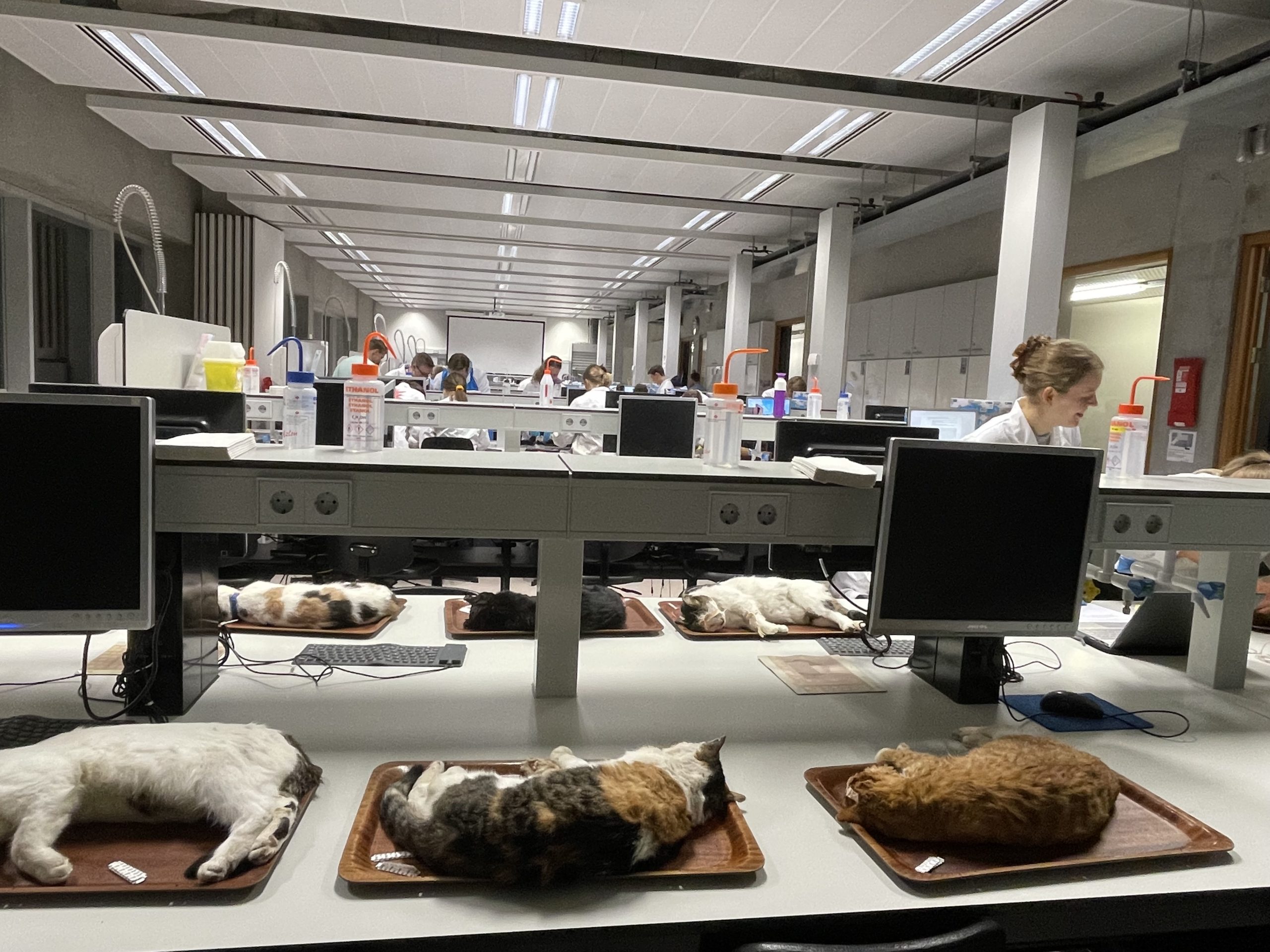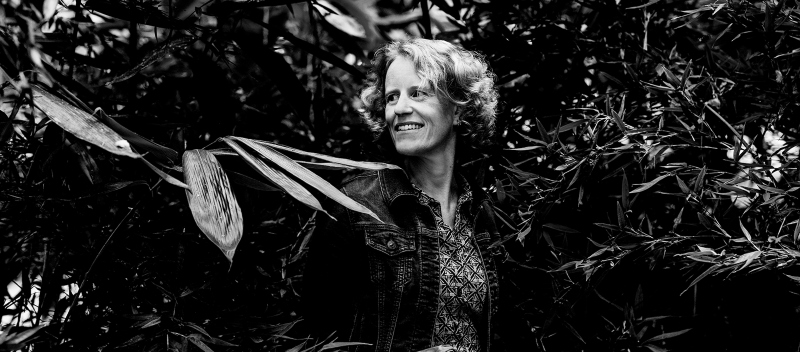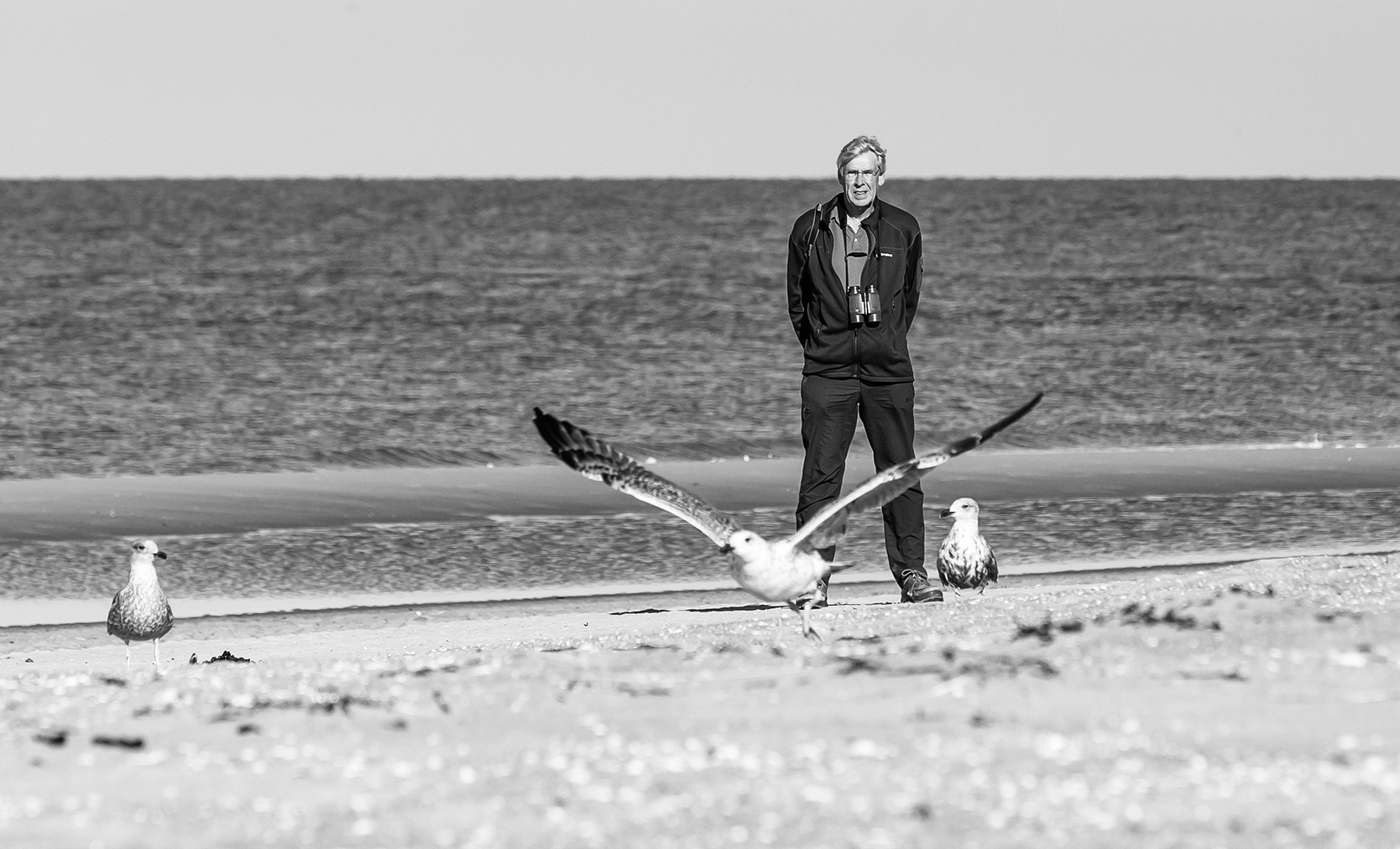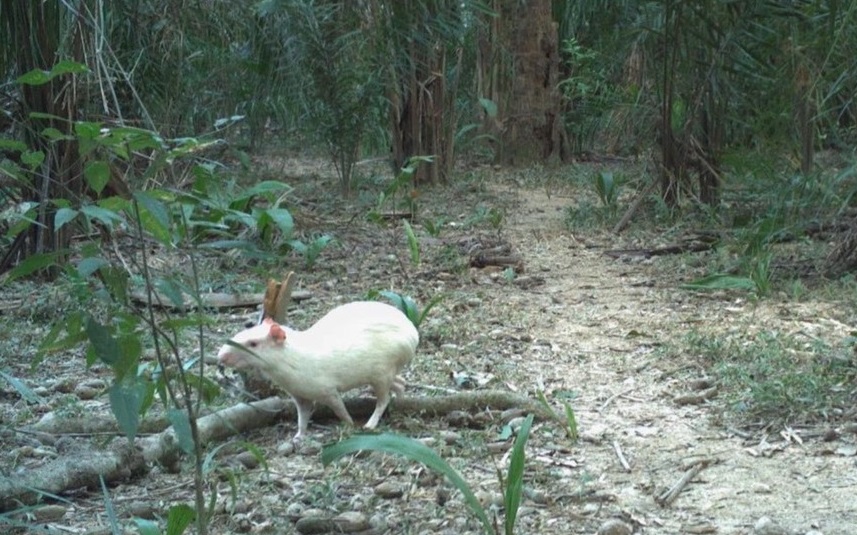Dead cats, muskrats and otters have been kept in the freezer of Forum’s eighth floor for months. Roadkill collected by the Animal Ambulance or, in the case of the muskrats, caught by the Forestry Commission. Their death is not entirely without value, as is demonstrated during Biologica’s anatomy evening. Resource attended.
‘Is it obvious that this is my first time?’ a first-year student asks. She is one of eighty students attending the evening, which has been organised annually for over two decades. This evening’s topic is Who decides who lives or dies? Otters are protected under Dutch law, but muskrats and cats are not. Both species cause considerable ecological damage. Muskrats damage the dykes, and domesticated cats are responsible for killing a large number of birds. Moreover, we go out of our way to kill muskrats. At the same time, we make every conceivable effort to keep cats alive for as long as possible.
Beloved pets
The biology students are in for a surprise when they enter the room. All these dead cats are quite shocking. ‘All of these cats have been hit by a vehicle and were picked up by the Animal Ambulance but were never claimed’, says Jonne, one of the evening’s organisers (full name known to the editors). A total of 45 cats were removed from different locations, but not all of the cadavers are available this evening. ‘Some find cats difficult to dissect because they are pets that they love. However, they are also an environmental hazard, just like the muskrats we have here’, says Jonne.
After a brief introduction, the participants start to dissect under the watchful eyes of lab assistants. Some of the biologists are first-year students who have yet to follow a dissection practical. ‘Is it obvious that this is my first time?’ a first-year student, who is gingerly dissecting a cat, asks. ‘When I came in, it was quite confronting, but now that I’ve been here for a while, it’s okay.’ Another student affirms this. ‘I’m able to distance myself’, she says, ‘but it takes some effort: we have quite a few cats at home. Still, a cat is an animal like all others, and being able to see its anatomy is valuable. Moreover, I wouldn’t want the carcasses to go to waste.’
Second ‘life’
For some students, the anatomy evening is a regular occurrence. ‘I have been coming here for years. This may well be my fifth time.’ While talking, she studies the innards of a muskrat. ‘I’m searching for the pancreas. Yes, it is fascinating, particularly seeing how animals often look the same on the inside.’
The students who are here this evening aim to gain more experience in dissecting. ‘We want to offer enthusiastic students this opportunity’, says Jonne. ‘Doing and discovering are the best way to learn. Moreover, it is a great opportunity to examine unusual animals closely.’ Two biology students are studying an otter. ‘This is the largest animal we have been able to dissect; really cool. You are unlikely to get another opportunity to dissect an otter. He was hit by a vehicle, his skull is broken, but his innards are completely intact.’
‘The otter, the muskrat and the cat have been given a second life as teachers on our dissecting table’, Jonne says. ‘These lessons in anatomy will not be easily forgotten.’
Dissecting
Biology students take their first dissecting practicals at the end of their first year. There, they dissect a carp to uncover the basic structure of a vertebrate. Small sharks were previously used, but following signs that these animals were unethically explicitly bred for the practicals, carp were used instead. In the second year, during a follow-up course in Human and Animal Biology II, the students dissect a stillborn piglet. Here, they study how animals have changed during evolution.

 Biology students dissect roadkill. Photo Ilja Bouwknegt
Biology students dissect roadkill. Photo Ilja Bouwknegt 

